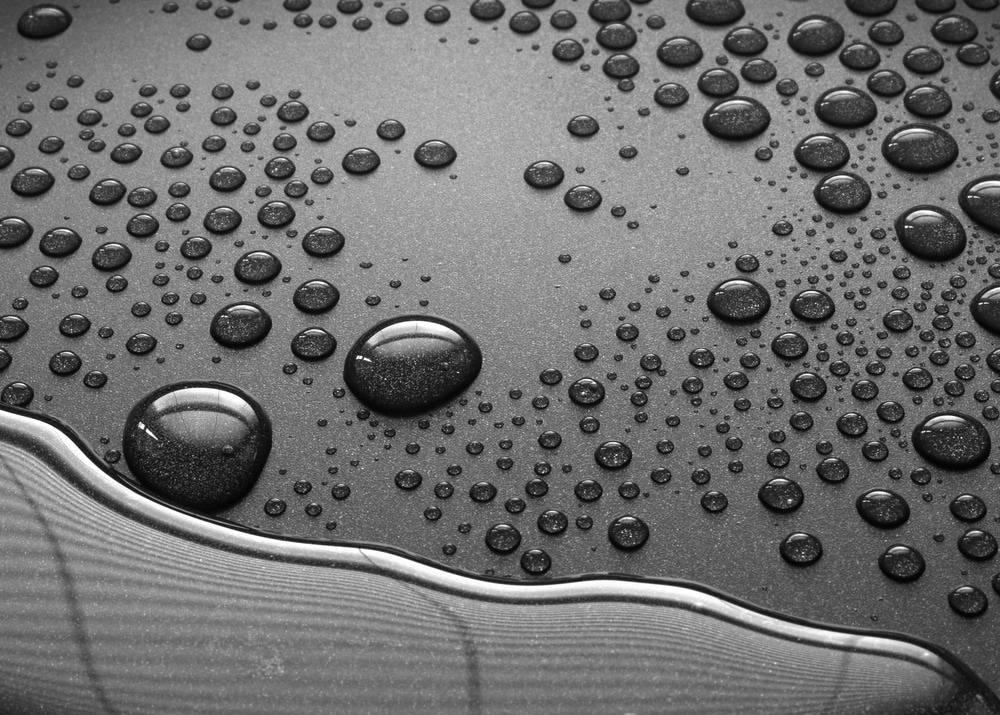Coatings are essential for many products, protecting them from damage and extending their lifetime. However, there are some key issues with conventional coatings, especially their potential toxicity. This article will explore P2i’s sustainable liquid protection solutions.

Image Credit: Pefkos/Shutterstock.com
The Problem With Protective Coatings
Protective coatings are used in many key commercial products in the 21st century. While conventional protective coatings are extremely effective at resisting environmental conditions, they typically contain toxic chemicals.
Halogens are commonly used in protective companies, with fluorine and fluorine-based chemicals as widespread types. Although it is safe in low concentrations, fluorine can cause acute fluoride toxicity in humans if consumed in large enough amounts.
Fluoride toxicity can lead to health problems such as impaired neurodevelopment, kidney nephrotoxicity, thyroid problems, and can interfere with healthy bone tissue production. High concentrations of fluorine can also adversely affect marine organisms.
Fluoride poisoning is a critical public health issue in developing nations such as India, where it is estimated that nearly sixty million people have been poisoned by fluoride-contaminated well water.
Fluorine in the Electronics Industry
One widespread application for protective coatings is in the electronics industry, where critical components such as CPUs, motherboards, and sensors need to be protected from issues such as water ingress and consequent corrosion.
The use of fluorine in the electronics industry as a protective coating is especially problematic. The amount of e-waste is increasing exponentially due to accelerating electronics production, demand, consumer consumption habits, and a lack of adequate recycling processes.
E-waste is typically disposed of in landfills, presenting a critical environmental and public health challenge for developed and developing nations. Recognizing the scale of this issue, several governmental bodies have introduced regulations to control the use of fluorine and phase out its use in applications such as coatings.
In 2021, 58 million tons of e-waste were generated, equivalent to around ten times the weight of the Great Pyramid in Giza. By 2030, it is predicted that seventy-five million tons of e-waste will be generated annually, around 8.8 kg for every person in the world. Per annum, only 17% of e-waste is recycled.
P2i: A Company Leading the Way in Sustainable Alternatives
There is an urgent need for more sustainable alternatives which provide the same degree of protection for electronic devices while removing the need for harmful chemicals such as fluorine. Innovative material design is at the forefront of this field.
Nanotech firm P2i, based in Oxford in the UK, has developed an innovative solution to overcome the problems with conventional coatings that contain fluorine or other halogens. The company’s ultrathin coatings prevent water ingress, protect against corrosion, and provide enhanced liquid repellence for coated parts and devices.
The novel coating technology developed by P2i is the thinnest, most robust protective coating currently on the market, providing protection against the full range of environmental conditions and liquids. The technology functions at the molecular level to provide manufacturers with optimal coating performance.
P2i’s coating technology provides water ingress and material corrosion ingress for a wide range of materials and devices.
Electrical barrier coating properties protect against corrosive damage to devices and components. Any solid surface can be functionalized with the company’s technological solutions.
The Technology
The unique protective coatings developed by P2i are plasma-based. The company’s patented ultra-thin plasma-enhanced chemical deposition (PECVD) process creates coatings that can be tailored to a client’s needs, providing optimal coating performance. The products provide IPx1 – Ipx8+ protection against water and dust ingress.
Coatings are applied after material or device manufacture and before product packaging and shipping. The patented PECVD process is solvent-free and does not require volatile organic compounds, which limits the environmental sustainability of conventional coating methods.
The coatings require no post-processing heat treatments or curing steps, with a filter stack removing any post-process vapors produced during preparation. A fully contained, sealed chamber is used to coat devices, materials, and components.
P2i’s products are completely PFAS- and halogen-free, making them non-toxic and, therefore, safe to use as they do not cause harm to the environment or public health. Monomers used in the preparation of P2i’s sustainable ultrathin barrier coatings are compliant with every current global regulation.
Aside from the coating’s compliance with current regulations, the halogen and PFAS-free nature of the company’s technology will ensure its continued compliance with expected future regulations. The company’s patented production process and platform technology are extremely environmentally friendly.

Image Credit: Raul Mellado Ortiz/Shutterstock.com
Enabling the Circular Economy
The concept of the circular economy is gaining significant traction currently as industries aim to reduce resource exploitation, waste, climate change-inducing carbon dioxide emissions, and pollution.
P2i’s halogen and PFAS-free ultrathin coatings enable companies and governments to improve the recovery, recycling, and reuse of coated electronic devices and other products, which are the three central tenets of the circular economy concept.
As mentioned previously in this article, e-waste is a pervasive, growing problem that presents significant environmental and public health challenges for both developed and developing nations. With just 17% of e-waste recycled annually, there is an urgent need for new technologies and sustainable solutions for the industry.
Aside from the electronics industry, the company also provides solutions to a wide range of materials manufacturers and the life sciences and medical industries. P2i has been working with the medical industry for fifteen years, providing market-leading coating solutions that are safe to use, sustainable, and cost-effective.
P2i Receive £15m Funding from HSBC
P2i has received £15m funding from HSBC’s UK Growth Lending fund. The company is the first business to receive funding from this UK bank. The investment funding recognizes the forward-thinking, innovative nature of the company and the significant environmental benefits that P2i’s barrier coatings give to the industry.
The funding will allow the company to meet its ambitions as an internationally focused UK tech company that aims to improve the sustainability and circularity of sectors such as the electronics industry. HSBC will not take a stake in P2i’s intellectual property, supporting the company’s growth through financial partnership.
References and Further Reading
P2i (website) Delivering Ultra-Thin Barrier Coatings to Sustainably Protect Devices and Materials [online] https://www.p2i.com/#technology-sec
Hornstein, O (2022) Nanotech firm P2i raises £15m in first HSBC fund investment [online] uktech.news. Available at: https://www.uktech.news/deep-tech/p2i-15m-funding-hsbc-20221128
Disclaimer: The views expressed here are those of the author expressed in their private capacity and do not necessarily represent the views of AZoM.com Limited T/A AZoNetwork the owner and operator of this website. This disclaimer forms part of the Terms and conditions of use of this website.